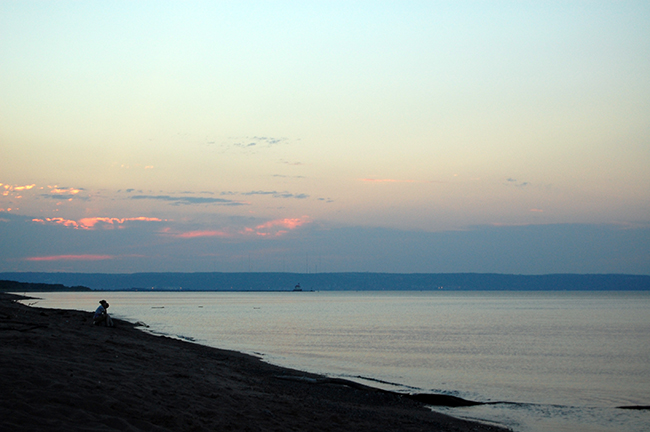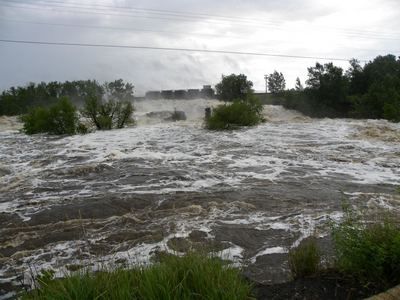With the flooding underway in the Northland, is it time to stop worrying about the low water levels on Lake Superior?
All of this — and more — is heading your way, Gichigami.
This is the St. Louis River, as captured by the Minnesota Department of Transportation this morning.
But that, is still a very small drop in this…

(Image by Nate Minor/MPR)
Five years ago, you couldn’t skip a stone without hitting a news story about the cause of dropping water levels on Superior. It worried environmentalists, who feared the role of climate change on ecosystems, and the shipping industry, which had to dig much deeper channels at loading docks in Duluth.
It still is a concern. Coincidentally, the International Joint Commission announced a series of public hearings yesterday on a report it’s prepared on the use of Superior water to manage water levels in lakes Huron and Michigan (report available here).
It found that although Lake Superior water levels have fluctuated in a very narrow range, “increasing evaporation over the past 60 years has not been compensated for by increased precipitation.” It expects the lake water levels to continue to drop, although it said much more research has to be done on this.
But back to the here-and-now for a moment. How big a difference has this year’s rainy season had on the lake compared to a year ago, when things were fairly dry? Not much.
I know there are people in the NewsCut audience who are pretty good at these sorts of calculations. How much more on average would one river have to provide to raise Lake Superior water levels by 1 inch? Report your calculations below.



